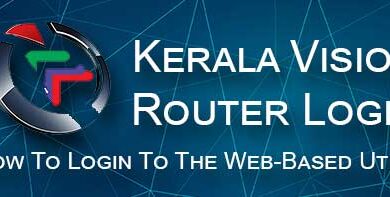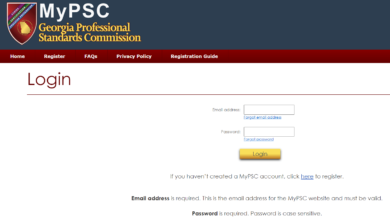Strategic Procurement Evolution: Compelling Reasons to Invest in Superior Procurement Technology

The procurement function has changed from being a strictly transactional operation to a strategic business driver in today’s cutthroat business climate. Businesses are realizing more and more that competitive positioning, operational effectiveness, and profitability are all directly impacted by procurement excellence. This progress is based on the technological infrastructure that makes procurement procedures possible. One of the most important technological choices a business can make is choosing a top-notch procurement platform. This essay looks at eight strong arguments for why spending money on top-notch procurement technology improves corporate performance in a number of areas, including financial management and competitive positioning.
1. Financial Performance Optimization
An organization’s financial performance is radically changed by a top-notch procurement platform through a number of methods that have a direct effect on the bottom line. While automated contract compliance guarantees that negotiated discounts constantly improve the bottom line, advanced expenditure analytics uncovers savings potential that was previously obscured by disjointed data systems. Procurement teams may utilize scale and aggregate demand for competitive pricing across categories by utilizing strategic sourcing skills. Additionally, early payment discount capture and optimal payment scheduling lead to gains in working capital. A return that significantly outweighs the technology investment and keeps providing value as procurement platform procedures advance is the usual hard-dollar savings of 5–15% per year across targeted expenditure categories reported by organizations deploying top-tier procurement technology.
2. Decision Intelligence Acceleration
Large amounts of transaction data are transformed into usable insight by a contemporary procurement platform, improving the quality of decisions made across the board. An advanced RFQ platform includes complex analytics engines that detect spending trends, forecast supplier performance problems, and highlight market trends impacting supply chains, in contrast to simple buying systems that only process orders. Strategic choices about supplier connections, category management techniques, and market positioning are guided by the visual representations of this knowledge provided by interactive dashboards. These tools allow procurement platform executives to go from reactive purchasing to proactive supply management by converting raw data into contextual insights. In turbulent markets where quick, well-informed choices have a direct influence on operational performance and financial results, this intelligence acceleration is a crucial competitive advantage.
3. Cross-Functional Collaboration Enhancement
A prominent procurement platform creates unified digital environments where procurement works in harmony with finance, operations, legal, and other corporate processes, dismantling the old departmental barriers that impede organizational efficiency. Joint supplier assessments, contract reviews, and sourcing initiatives are made easier by purpose-built collaboration features in the RFQ platform, which eliminate the need to disperse information among emails, shared drives, and meeting minutes. While keeping the required controls and clearances in place, stakeholders from various departments obtain the proper insight into procurement actions that impact their operations. Because of this cooperative setting, procurement is no longer a separate purchasing activity but rather an organizational hub that unifies cross-functional knowledge on supply choices. The ensuing alignment guarantees that procurement strategies really serve enterprise-wide goals rather than departmental interests, lowers internal friction, and speeds up decision cycles.
4. Supply Chain Resilience Fortification
Supply chain resilience is a crucial organizational competency, as seen by recent global disruptions, and an advanced procurement platform offers the framework for fostering this resilience. Sophisticated supplier risk monitoring is made possible by these technologies, which spot any weaknesses before they become problems. Dependencies across the supply chain that are hidden in traditional systems are revealed by multi-tier supplier visibility. Procurement teams may use scenario planning tools to simulate possible interruptions and create backup plans before emergencies arise. These systems enable quick supplier contact, the discovery of other sources, and the deployment of a coordinated reaction when interruptions do occur. During supply chain disruptions, companies with better procurement systems are routinely more flexible, reducing operational effects while rivals battle with manual workarounds and information gaps that impede prompt action.
5. Process Standardization Excellence
By encoding procurement best practices into customizable workflows, a superior procurement platform provides standardized, repeatable procedures throughout the company. Advanced platforms include industry-standard techniques created through substantial procurement expertise across industries, in contrast to simple purchasing systems that only digitize current processes. By standardizing methods for supplier qualifying, bid review, contract management, and performance evaluation, these integrated best practices remove procedural variances that lead to inefficiencies and compliance issues. Standardization of the ensuing process lowers the need for training, decreases mistakes, and produces scalable procurement procedures that continue to function well as the company expands. Most significantly, standardized procedures produce data that is similar across business units and categories, allowing for insightful performance benchmarking that promotes ongoing procurement result improvement.
6. Talent Leverage Maximization
By automating repetitive operations and improving their strategic skills, top procurement systems greatly increase the effectiveness of procurement experts. Time-consuming manual tasks, including data input, approval routing, and document preparation, that formerly used up to 60% of procurement staff time, are eliminated by advanced process automation. Procurement professionals are no longer distracted by requisitioner inquiries thanks to intelligent supplier catalogs with guided buying features.
Procurement experts may now access market information and expenditure analysis that were previously only available through specialized data analysts, thanks to powerful analytical tools. Procurement teams’ capacity is effectively multiplied by this all-encompassing productivity enhancement, enabling organizations to either work with fewer procurement staff or reallocate current resources to higher-value strategic activities like value engineering, supplier relationship management, and market intelligence collection.
7. Regulatory Compliance Assurance
Strong compliance frameworks created by superior procurement systems shield businesses from ever-more-complex regulatory obligations that have an impact on purchasing operations. Configurable controls that ensure adherence to pertinent laws, such as anti-bribery statutes, penalty limitations, diversity rules, and industry-specific mandates, are included in these systems. In order to provide convincing proof of compliance for regulatory evaluations, thorough audit trails record each purchase activity together with user identities, timestamps, and decision justifications. Automated policy enforcement eliminates expensive remedial efforts by stopping non-compliant transactions before they happen. The RFQ platform enables multinational corporations to adjust to several regulatory frameworks at the same time, implementing suitable regulations according to transaction location without necessitating distinct systems for every jurisdiction. This multi-layered compliance protection minimizes the administrative load related to compliance documents while drastically lowering the exposure to regulatory risk.
Conclusion
Choosing to invest in a top-notch procurement or RFQ platform is a fundamental shift in how procurement contributes to organizational performance, going well beyond a mere technological update. These systems impact almost every facet of corporate performance, from creating robust supply networks that can survive worldwide interruptions to generating quantifiable financial benefits through expenditure optimization. Procurement teams may provide strategic value that directly affects market position and financial results thanks to the competitive advantages they generate, which go well beyond processing efficiency.




